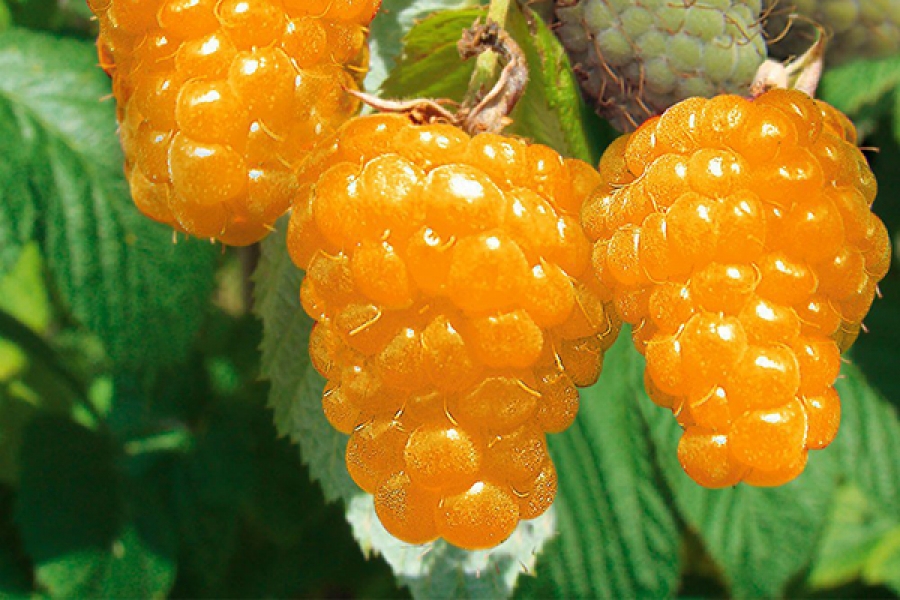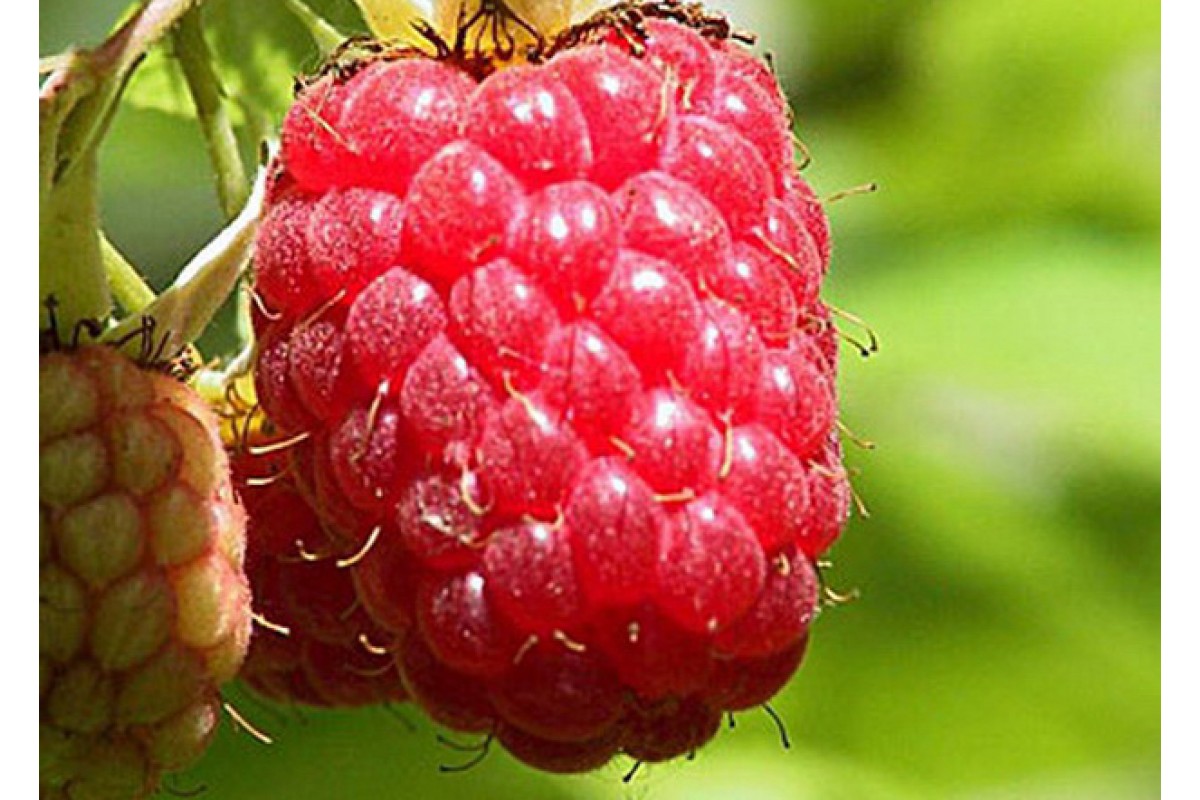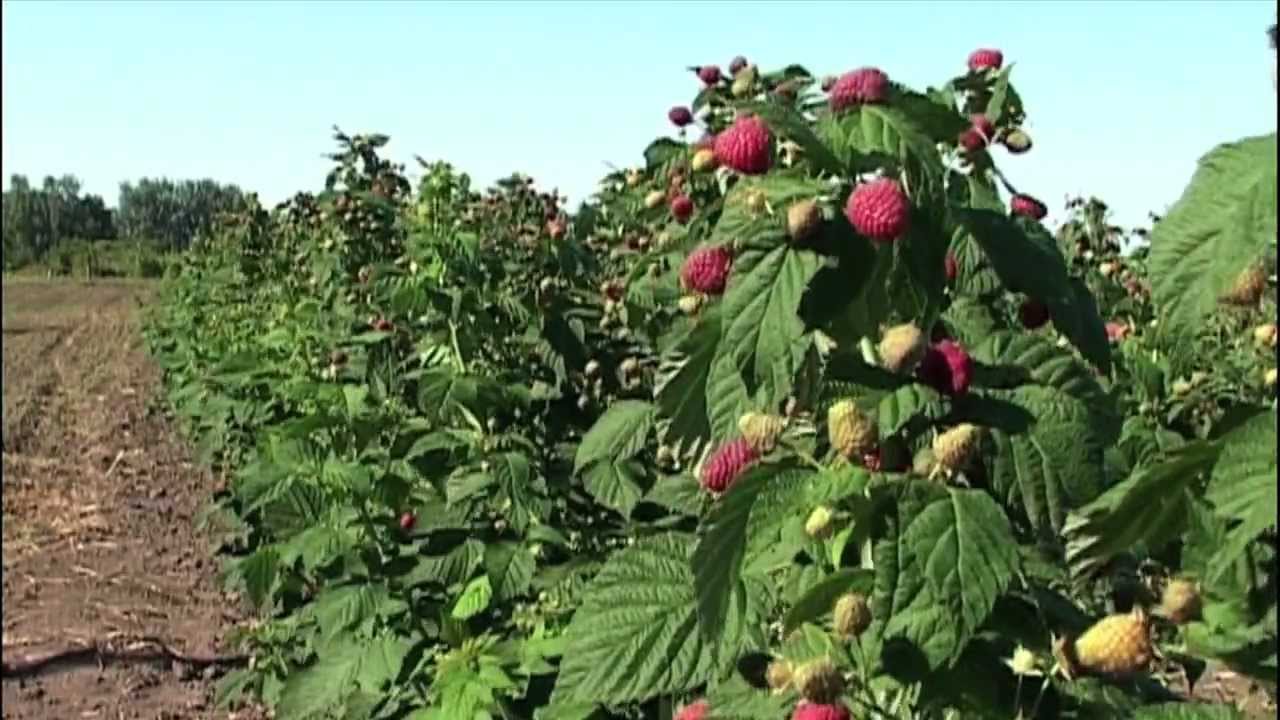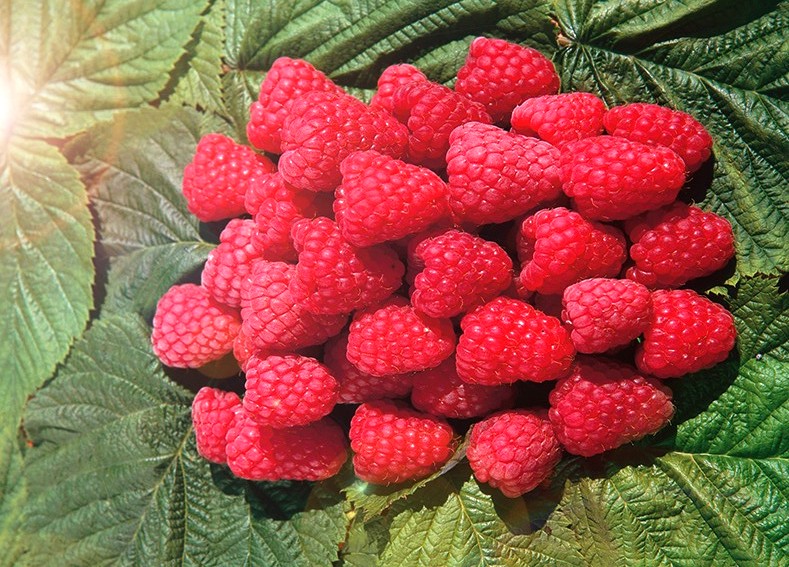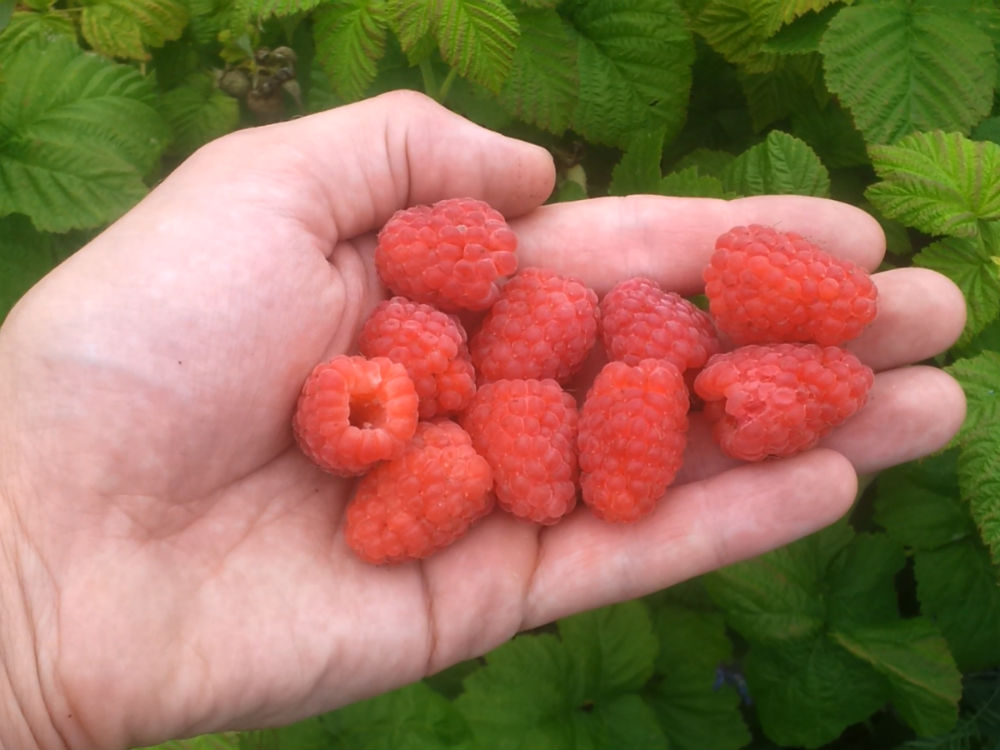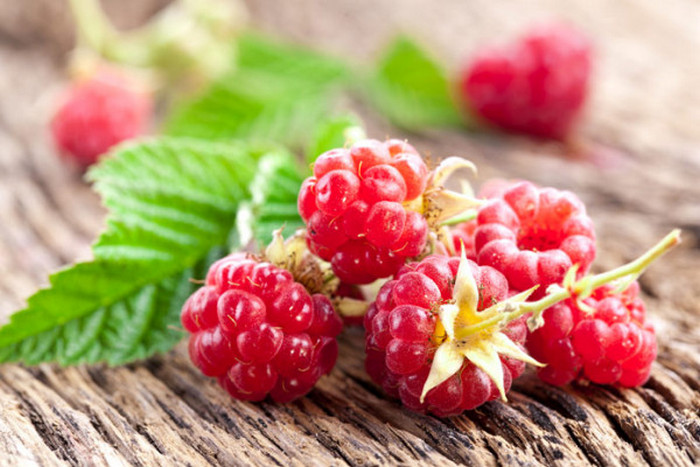A relatively new type of remontant type - Zyugan raspberry, was developed by Swedish breeding experts. Due to its characteristics, Zyugan's raspberry very quickly became in demand among gardeners, including in our country.
Content:
Description of Zyugan's raspberry
The bush has a developed root system and powerful thornless shoots. The variety is characterized by double fruiting: in July, berries appear on last year's shoots, and, starting from the end of August, on young ones. Plant height reaches almost two meters. The foliage of the bush has a rich green color. A thorn on the trunk is found, but closer to the bottom, so that it does not interfere with harvesting and caring for the berry.
The berries weigh more than 7 g, have a blunt cone shape and a rich crimson color. Almost 10 kg are harvested from one bush per season. In part, this indicator is achieved due to the fact that the raspberry bush continues to bear fruit successfully until the onset of frost.
Zyugana raspberry, in accordance with the description of the variety, has a high index of frost resistance and can withstand temperatures up to -32 degrees. The variety also tolerates high temperature readings. Due to its dense skin, the berry retains moisture for a long time and retains a good presentation during transportation. Fresh raspberry remontant Zyugan is stored for at least four days at room temperature. In the refrigerator (without freezing) it can be kept for about a week without sacrificing its taste and appearance. The taste characteristics of varietal raspberries are also excellent - the fruits are very sweet with a slight sour aftertaste.
Description of Zyugan's yellow raspberry
Sometimes, reading the description of the Shugan raspberry varieties, you can find a mention that the berries have a yellow tint. This is a variety of the described variety - Zyugan gold, or yellow Zyugan. By and large, this modification of the variety does not have much difference. It also tolerates heat and cold well, has large berries and has a high yield. The main feature is the yellow color of the berries. But it is the color of the fruit that makes the yellow Zyugana hypoallergenic. As a result, it is optimally suited for consumption by allergy sufferers, pregnant women and children.
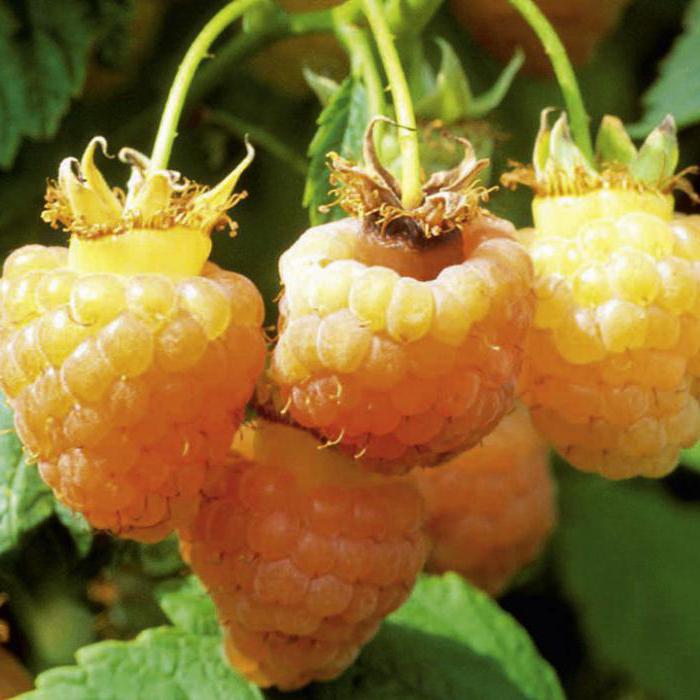
Yellow Zyugan looks quite exotic in the garden
This type is somewhat different in taste - it is almost completely devoid of acidity.
Care
Raspberry Zyugan, although not too whimsical, still requires some care. The better it is looked after, the more abundant the harvest will be at the end of the season.
Choosing a landing site
Planting of both yellow and red Zyugan raspberries is identical. This fruit and berry crop can be grown in the open field and in greenhouses. Its stems are strong enough that they do not need a garter. Shrubs are quite unpretentious to the soil, but practice shows that they grow better in fertile loose soils. The plant does not tolerate acidic soil well, therefore, before planting a seedling in such soil, it should be carefully calcified.
Zyugana loves the sun and warmth very much, this should be taken into account when choosing a site for planting. The raspberry tree should be protected from wind and draft. A dense fence or structure would be optimal protection.
It is not recommended to plant the plant in places where groundwater runs too close to the surface.The soil on which other varieties of raspberries, tomatoes or potatoes were previously planted is also bad for planting.
Landing
Planting plants is very important. It is produced in autumn or early spring. A place for a spring planting is usually prepared in the fall:
- thoroughly cleared of existing weeds;
- dug up the soil;
- a sufficient amount of complex and organic fertilizers is applied).
Each stalk from which seedlings are prepared must be carefully selected and be sufficiently healthy and strong. The seedlings are placed in pits with parameters 40x50x30 at a distance of 50-70 cm from one another. The optimal distance between rows is one and a half meters.
For autumn planting, the soil is prepared in the same way in the spring. You don't only need to remove the weeds - they simply don't have time to grow.
Watering
Caring for Zyugan's raspberries without fail involves watering the plants. Unlike most other varieties of berries, this variety is very fond of water. In dry summers, shrubs should be watered especially often, since their root system is located close to the surface.
After each watering, the soil must be loosened and mulched with sawdust or peat humus. The optimal mulch layer is up to 10 cm.
But you should not overfill the raspberry with water. Otherwise, the roots may start to rot and the plant will die.
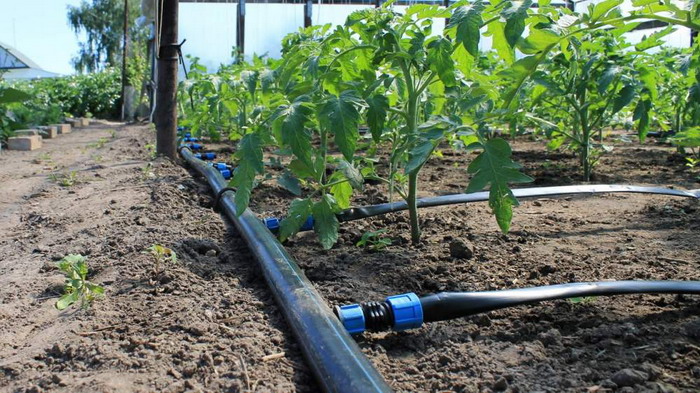
For Zyugan's raspberries, drip irrigation is most suitable
Top dressing
Since Zyugana belongs to large-fruited varieties, the soil in which it grows, without fail, requires fertilization. Otherwise, you can forget about a decent harvest. Plant feeding usually begins in early spring, as soon as the snow melts. At this time, urea is added to the soil. Once again, raspberries are fertilized in the fall. In this case, mineral fertilizers are used.
Pruning
Without timely pruning of excess shoots, full care of the Zyugan variety will not work. This manipulation can even be called the basis for caring for a raspberry tree. If only one harvest is planned, the shoots should be cut at the root. At the same time, hemp should not be allowed to remain above the soil surface, they can become a real breeding ground for bacteria. In this case, the shoots of the previous year are subject to removal, and fresh stems remain for the next year.
To obtain two harvests per year (on old and new shoots), pruning is done in the spring. In this case, remove weak, old, dried and weakened branches.
Fighting disease
Despite the fact that all remontant types of raspberries are resistant to most diseases and harmful insects, at high humidity there is a risk of infection of the raspberry with fungal infections. First of all, we are talking about ventcellosis, purple spot, anthracnose and septoria. The fight against all of these diseases is carried out using solutions of any fungicide. If the bush cannot be cured, all affected shoots are removed.
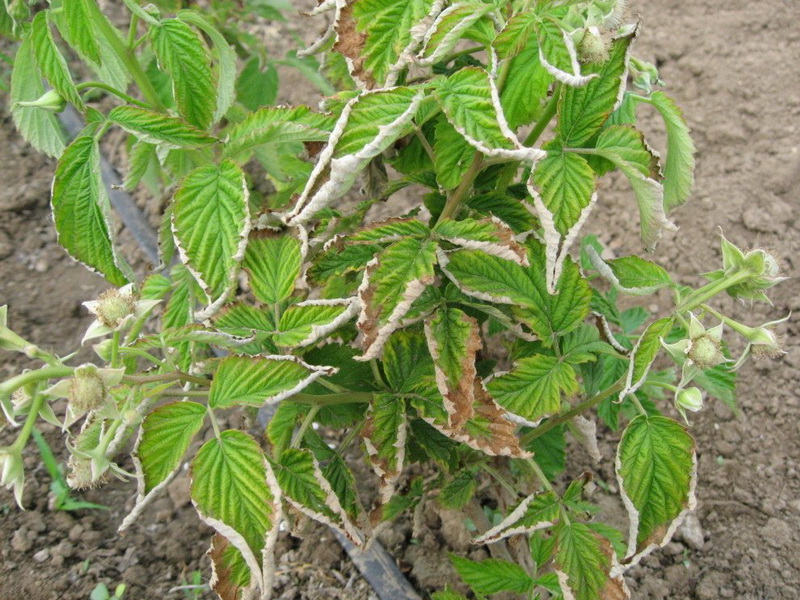
If you do not forget about raspberries, they will not hurt
The detailed characteristics given to the variety will make it possible to understand why this fruit and berry crop is so in demand among gardeners.
